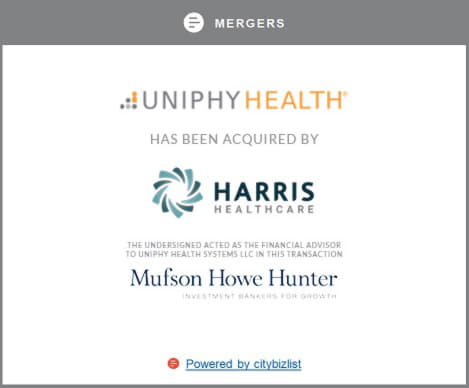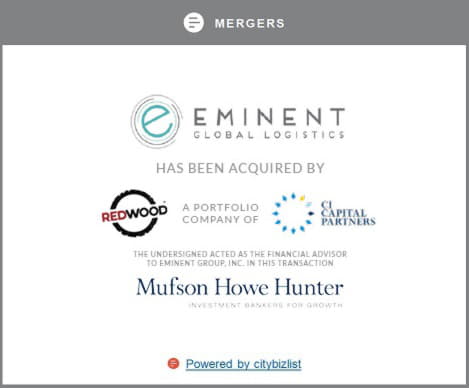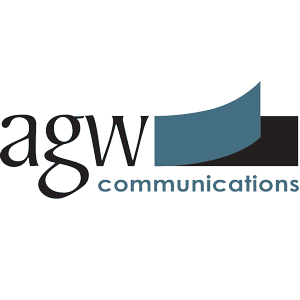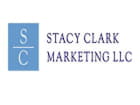TEL AVIV, Israel--(BUSINESS WIRE)--Teva Pharmaceutical Industries Ltd. (NYSE: TEVA, TASE: TEVA) today reported results for the quarter ended June 30, 2020.
Mr. Kåre Schultz, Teva's President and CEO, said, “As the COVID-19 pandemic continues to impact the globe, Teva remains focused on our patients and communities while continuing to take robust measures to safeguard the health and well-being of our employees. During the quarter, we experienced lower sales of our generic and OTC products in all regions. The lower generics and OTC sales in Europe and International Markets were in line with our expectations, after the unusually high demand seen in the prior quarter due to the initial response to the pandemic. Our performance in the first half of the year, however, matched or exceeded that of the similar period last year. Our profitability – and in particular our free cash flow – were strong, allowing us to continue to reduce our net debt to $23.9 billion and to reaffirm our 2020 outlook."
Mr. Schultz continued, "During the quarter we made progress with many of our growth drivers, including the launch of the AJOVY® auto-injector in the U.S., the continued launch of AJOVY in the EU, the launch of the biosimilar TRUXIMA® for rheumatoid arthritis in the U.S. and approval of AUSTEDO® in China. Additionally, we recently announced the launch of ProAir® DigiHaler® in the U.S. and the submission of an application for manufacturing and marketing approval of AJOVY in Japan. As we look forward to the second half of 2020, we remain fully committed to serving society and our stakeholders with critical and accessible medicines and to ensuring Teva meet its targets."
Phase 3 fasinumab results announced with Regeneron
In September 2016, Teva and Regeneron Pharmaceuticals, Inc. (“Regeneron”) entered into a collaborative agreement to develop and commercialize Regeneron’s pain medication product, fasinumab. Results for two phase 3 clinical trials, FACT OA1 and FACT OA2, were released on August 5, 2020, indicating that the co-primary endpoints for fasinumab were achieved. Fasinumab 1 mg monthly demonstrated significant improvements in pain and physical function over placebo at week 16 and week 24, respectively. Fasinumab 1 mg monthly also showed nominally significant benefits in physical function in two trials and pain in one trial, when compared to the maximum FDA-approved prescription doses of non-steroidal anti-inflammatory drugs for osteoarthritis. The FACT OA1 trial included an additional treatment arm, fasinumab 1 mg every two months, which showed numerical benefit over placebo, but did not reach statistical significance. In initial safety analyses from the phase 3 trials, there was an increase in arthropathies reported with fasinumab. In a sub-group of patients from one phase 3 long-term safety trial, there was an increase in joint replacement with fasinumab 1 mg monthly treatment during the off-drug follow-up period, although this increase was not seen in the other trials to date. Additional longer-term safety data from the ongoing trials are being collected, and are expected to be reported early next year.
Second Quarter 2020 Consolidated Results
Revenues in the second quarter of 2020 were $3,870 million, a decrease of 7%, or 5% in local currency terms, compared to the second quarter of 2019. This decrease was mainly due to lower revenues from generics, OTC and COPAXONE® in all regions and lower revenues from QVAR® and BENDEKA®/TREANDA® in our North America segment, as well as reduced demand for certain products resulting from the impact the COVID-19 pandemic had on purchasing patterns, partially offset by higher revenues from AUSTEDO, Anda and AJOVY in the U.S.
Exchange rate differences between the second quarter of 2020 and the second quarter of 2019, net of hedging, negatively impacted our revenues by $79 million and negatively impacted our GAAP and non-GAAP operating income by $35 million and $37 million, respectively.
GAAP gross profit was $1,763 million in the second quarter of 2020, a decrease of 7% compared to the second quarter of 2019. GAAP gross profit margin was 45.5% in the second quarter of 2020, compared to 45.3% in the second quarter of 2019. Non-GAAP gross profit was $2,011 million in the second quarter of 2020, a decrease of 8% compared to the second quarter of 2019. Non-GAAP gross profit margin was 52.0% in the second quarter of 2020, compared to 52.4% in the second quarter of 2019. The decrease in gross profit margin was mainly due to lower profitability in Europe resulting from price decreases in our specialty products and lower profitability in International Markets primarily resulting from lower sales in Japan and the impact the COVID-19 pandemic had on purchasing patterns, as well as lower sales of COPAXONE and other specialty products, partially offset by higher profitability in North America resulting from the change in mix of products.
GAAP Research and Development (R&D) expenses in the second quarter of 2020 were $225 million, a decrease of 19% compared to the second quarter of 2019. Non-GAAP R&D expenses were $233 million, or 6.0% of quarterly revenues, in the second quarter of 2020, compared to $271 million, or 6.5%, in the second quarter of 2019. The decrease in R&D expenses resulted primarily from the life cycle and stage of various projects, as well as an impact related to the COVID-19 pandemic.
GAAP Selling and Marketing (S&M) expenses in the second quarter of 2020 were $597 million, a decrease of 10% compared to the second quarter of 2019. Non-GAAP S&M expenses were $559 million, or 14.4% of quarterly revenues, in the second quarter of 2020, compared to $621 million, or 14.9%, in the second quarter of 2019. The decrease was mainly due to cost reductions and efficiency measures, as well as lower marketing and travel costs attributed to restrictions related to the COVID-19 pandemic.
GAAP General and Administrative (G&A) expenses in the second quarter of 2020 were $264 million, a decrease of 11% compared to the second quarter of 2019. Non-GAAP G&A expenses were $245 million, or 6.3% of quarterly revenues, in the second quarter of 2020, compared to $286 million, or 6.8%, in the second quarter of 2019.
GAAP other income in the second quarter of 2020 was $9 million, flat compared to the second quarter of 2019. Non-GAAP other income in the second quarter of 2020 was $6 million. We did not have any non-GAAP other income in the second quarter of 2019.
GAAP operating income in the second quarter of 2020 was $173 million, compared to GAAP operating loss of $644 million in the second quarter of 2019. Non-GAAP operating income in the second quarter of 2020 was $979 million, a decrease of 3%, compared to $1,011 million in the second quarter of 2019. The increase in GAAP operating income was mainly due to higher legal settlements and loss contingencies charges in the second quarter of 2019 and lower intangible asset impairments charges in the second quarter of 2020, as well as the changes discussed above, partially offset by higher other assets impairments, restructuring and other items in the second quarter of 2020.
EBITDA (non-GAAP operating income, which excludes amortization and certain other items, as well as depreciation expenses) was $1,108 million in the second quarter of 2020, a decrease of 3% compared to $1,144 million in the second quarter of 2019.
GAAP financial expenses were $223 million in the second quarter of 2020, compared to $206 million in the second quarter of 2019. Non-GAAP financial expenses were $229 million in the second quarter of 2020, compared to $198 million in the second quarter of 2019.
In the second quarter of 2020, we recognized a GAAP tax benefit of $104 million, on pre-tax loss of $51 million. In the second quarter of 2019, we recognized a tax benefit of $179 million, on pre-tax loss of $850 million. Our tax rate for the second quarter of 2020 was mainly affected by impairments in jurisdictions in which tax rates are higher than Teva's average tax rate on its ongoing business operations and other changes to tax positions and deductions. Non-GAAP income taxes for the second quarter of 2020 were $128 million, or 17%, on pre-tax non-GAAP income of $751 million. Non-GAAP income taxes in the second quarter of 2019 were $134 million, or 16%, on pre-tax non-GAAP income of $812 million. Our non-GAAP tax rate for the second quarter of 2020 was mainly affected by the mix of products sold and other changes to tax positions and deductions.
We expect our annual non-GAAP tax rate for 2020 to be 17-18%, unchanged from our outlook provided in February 2020.
GAAP net income attributable to Teva and GAAP diluted EPS were $140 million and $0.13 respectively, in the second quarter of 2020, compared to GAAP net loss and GAAP diluted loss per share of $689 million and $0.63 in the second quarter of 2019. Non-GAAP net income attributable to Teva and non-GAAP diluted EPS in the second quarter of 2020 were $605 million and $0.55, respectively, compared to $653 million and $0.60 in the second quarter of 2019. The decrease in non-GAAP net income and non-GAAPdiluted EPS is mainly due to lower gross profit, partially offset by lower operating expenses.
The weighted average diluted shares outstanding used for the fully diluted share calculation for the three months ended June 30, 2020 and 2019 were 1,100 million and 1,092 million shares, respectively. The weighted average outstanding shares for the fully diluted EPS calculation on a non-GAAP basis for the three months ended June 30, 2020 and 2019 were 1,100 million and 1,093 million shares, respectively.
As of June 30, 2020 and 2019, the fully diluted share count for purposes of calculating our market capitalization was approximately 1,119 million and 1,107 million, respectively.
Non-GAAP information: Net non-GAAP adjustments in the second quarter of 2020 were $465 million. Non-GAAP net income and non-GAAP EPS for the second quarter of 2020 were adjusted to exclude the following items:
- Impairment of long-lived assets of $396 million, mainly comprised of $261 million related to an agreement to sell certain assets from Teva’s business venture in Japan and $108 million impairment of intangible assets of product rights and IPR&D assets related to the Actavis Generics acquisition;
- Amortization of purchased intangible assets of $249 million, of which $219 million is included in cost of sales and the remaining $30 million in S&M expenses;
- Contingent consideration expenses of $76 million, mainly related to bendamustine;
- Restructuring expenses of $33 million;
- Equity compensation expenses of $30 million;
- Other items of $4 million;
- Legal settlements and loss contingencies of $13 million;
- Minority income of $105 million; and
- Income tax of $231 million.
Teva believes that excluding such items facilitates investors’ understanding of its business. For further information, see the tables below for a reconciliation of the U.S. GAAP results to the adjusted non-GAAP figures and the information under “Non-GAAP Financial Measures.” Investors should consider non-GAAP financial measures in addition to, and not as replacement for, or superior to, measures of financial performance prepared in accordance with GAAP.
Cash flow generated from operating activities during the second quarter of 2020 was $273 million, compared to cash flow used in operating activities of $227 million in the second quarter of 2019. The increase in the second quarter of 2020 was mainly due to favorable collection of payments from customers in the second quarter of 2020, resulting from increased sales in the first quarter.
Free cash flow (cash flow generated from operating activities, net of cash received for capital investments and beneficial interest collected in exchange for securitized trade receivables) was $582 million in the second quarter of 2020, compared to $168 million in the second quarter of 2019. The increase in the second quarter of 2020 resulted mainly from higher cash flow generated from operating activities.
As of June 30, 2020, our debt was $26,266 million, compared to $26,103 million as of March 31, 2020. This increase was mainly due to exchange rate fluctuations. The portion of total debt classified as short-term as of June 30, 2020 was 6%, similar to March 31, 2020. Our average debt maturity was approximately 6.1 years as of June 30, 2020 compared to 6.6 years as of March 31, 2020. In July 2020, we repaid at maturity debt of €1,010 million.
Segment Results for the Second Quarter of 2020
North America Segment
Our North America segment includes the United States and Canada.
The following table presents revenues, expenses and profit for our North America segment for the three months ended June 30, 2020 and 2019:
| Three months ended June 30, | ||||||||||||
| 2020 | 2019 | |||||||||||
| (U.S. $ in millions / % of Segment Revenues) | ||||||||||||
| Revenues | $ | 2,047 | 100 | % | $ | 2,071 | 100 | % | ||||
| Gross profit | 1,090 | 53.3 | % | 1,067 | 51.5 | % | ||||||
| R&D expenses | 154 | 7.5 | % | 175 | 8.5 | % | ||||||
| S&M expenses | 254 | 12.4 | % | 269 | 13.0 | % | ||||||
| G&A expenses | 110 | 5.4 | % | 117 | 5.6 | % | ||||||
| Other (income) expense | (2 | ) | § | 2 | § | |||||||
| Segment profit* | $ | 573 | 28.0 | % | $ | 504 | 24.3 | % | ||||
| _______________ | ||||||||||||
| * Segment profit does not include amortization and certain other items.§ Represents an amount less than 0.5%. | ||||||||||||
Revenues in the United States, our largest market, were $1,928 million in the second quarter of 2020, flat compared to the second quarter of 2019.
Revenues by Major Products and Activities
The following table presents revenues for our North America segment by major products and activities for the three months ended June 30, 2020 and 2019:
| Three months endedJune 30, | PercentageChange | ||||||||
| 2020 | 2019 | 2019-2020 | |||||||
| (U.S. $ in millions) | |||||||||
| Generic products | $ | 923 | $ | 946 | (2 | %) | |||
| AJOVY | 34 | 23 | 50 | % | |||||
| AUSTEDO | 161 | 96 | 67 | % | |||||
| BENDEKA/TREANDA | 103 | 125 | (18 | %) | |||||
| COPAXONE | 238 | 274 | (13 | %) | |||||
| ProAir* | 66 | 65 | 2 | % | |||||
| QVAR | 51 | 60 | (15 | %) | |||||
| Anda | 374 | 351 | 7 | % | |||||
| Other | 96 | 131 | (27 | %) | |||||
| Total | $ | 2,047 | $ | 2,071 | (1 | %) | |||
| _____________ | |||||||||
| * Does not include revenues from the ProAir authorized generic, which are included under generic products. | |||||||||
AJOVY revenues in our North America segment in the second quarter of 2020 were $34 million, an increase of $11 million, or 50% compared to the second quarter of 2019, mainly due to growth in volume in the second quarter of 2020 and the introduction of the auto-injector device. AJOVY was approved by the FDA and launched in the United States in September 2018 for the preventive treatment of migraine in adults. On January 27, 2020, the FDA approved an auto-injector device for AJOVY in the U.S., which became commercially available in April 2020. In addition, AJOVY was approved in Canada on April 14, 2020.
AUSTEDO revenues in our North America segment in the second quarter of 2020 increased by 67% to $161 million, compared to $96 million in the second quarter of 2019. This increase was mainly due to growth in volume in the second quarter of 2020.
BENDEKA and TREANDA combined revenues in our North America segment in the second quarter of 2020 decreased by 18% to $103 million, compared to the second quarter of 2019, mainly due to the emergence of alternative novel therapies and continued competition from Belrapzo® (a ready-to-dilute bendamustine hydrochloride product from Eagle Pharmaceuticals, Inc.).
COPAXONE revenues in our North America segment in the second quarter of 2020 decreased by 13% to $238 million, compared to the second quarter of 2019, mainly due to generic competition in the United States.
ProAir revenues in our North America segment in the second quarter of 2020 were $66 million, flat compared to the second quarter of 2019. In January 2019, we launched our own ProAir authorized generic in the United States following the launch of a generic version of Ventolin® HFA, another albuterol inhaler. Revenues from our ProAir HFA authorized generic are included in “generic products” above. ProAir is the fourth-largest short-acting beta-agonist in the market, with an exit market share of 11.0% in terms of total number of prescriptions for albuterol inhalers during the second quarter of 2020, compared to 23.9% in the second quarter of 2019. The exit market share including our ProAir HFA authorized generic is 33.4%, making our overall albuterol product the second largest in the market, compared to 44.4% in the second quarter of 2019.
In July 2020, we announced the launch of ProAir Digihaler (albuterol sulfate 117 mcg) inhalation powder, which is the first and only digital rescue inhaler with built-in sensors which connects to a companion mobile application and provides inhaler use information to people with asthma and COPD.
QVAR revenues in our North America segment in the second quarter of 2020 decreased by 15% to $51 million, compared to the second quarter of 2019, mainly due to increased price competition and lower volumes. QVAR maintained its second-place position in the inhaled corticosteroids category in the United States, with an exit market share of 19.8% in terms of total number of prescriptions during the second quarter of 2020, compared to 20.2% in the second quarter of 2019.
Anda revenues in our North America segment in the second quarter of 2020 increased by 7% to $374 million, compared to $351 million in the second quarter of 2019, mainly due to higher volume increases primarily related to the COVID-19 pandemic.
North America Gross Profit
Gross profit from our North America segment in the second quarter of 2020 was $1,090 million, an increase of 2%, compared to $1,067 million in the second quarter of 2019.
Gross profit margin for our North America segment in the second quarter of 2020 increased to 53.3%, compared to 51.5% in the second quarter of 2019. This increase was mainly due to the change in mix of products.
North America Profit
Profit from our North America segment consists of gross profit less R&D expenses, S&M expenses, G&A expenses and any other income related to this segment. Segment profit does not include amortization and certain other items.
Profit from our North America segment in the second quarter of 2020 was $573 million, an increase of 14%, compared to $504 million in the second quarter of 2019. This increase was due to a favorable mix of products, including AUSTEDO and AJOVY, and lower expenses.
Europe Segment
Our Europe segment includes the European Union and certain other European countries.
The following table presents revenues, expenses and profit for our Europe segment for the three months ended June 30, 2020 and 2019:
| Three months ended June 30, | ||||||||||||
| 2020 | 2019 | |||||||||||
| (U.S. $ in millions / % of Segment Revenues) | ||||||||||||
| Revenues | $ | 1,001 | 100 | % | $ | 1,183 | 100 | % | ||||
| Gross profit | 548 | 54.7 | % | 674 | 56.9 | % | ||||||
| R&D expenses | 65 | 6.5 | % | 70 | 5.9 | % | ||||||
| S&M expenses | 188 | 18.8 | % | 216 | 18.3 | % | ||||||
| G&A expenses | 52 | 5.2 | % | 70 | 5.9 | % | ||||||
| Other (income) expense | (1 | ) | § | 1 | § | |||||||
| Segment profit* | $ | 244 | 24.3 | % | $ | 316 | 26.7 | % | ||||
| ______________ | ||||||||||||
| * Segment profit does not include amortization and certain other items.§ Represents an amount less than 0.5%. | ||||||||||||
Revenues by Major Products and Activities
The following table presents revenues for our Europe segment by major products and activities for the three months ended June 30, 2020 and 2019:
| Three months endedJune 30, | PercentageChange | |||||
| 2020 | 2019 | 2019-2020 | ||||
| (U.S. $ in millions) | ||||||
| Generic products | $ | 737 | $ | 844 | (13 | %) |
| COPAXONE | 84 | 107 | (21 | %) | ||
| Respiratory products | 80 | 89 | (11 | %) | ||
| AJOVY | 5 | 1 | NA | |||
| Other | 95 | 142 | (33 | %) | ||
| Total | $ | 1,001 | $ | 1,183 | (15 | %) |
Respiratory products revenues in our Europe segment in the second quarter of 2020 decreased by 11% to $80 million, compared to the second quarter of 2019. In local currency terms, revenues decreased by 8%, mainly due to reduced demand resulting from the impact the COVID-19 pandemic had on purchasing patterns. The COVID-19 pandemic led to increased demand in the first quarter and a correlating decrease in demand in the second quarter.
AJOVY revenues in our Europe segment in the second quarter of 2020 were $5 million, compared to $1 million in the second quarter of 2019. AJOVY was granted a Marketing Authorization in the European Union by the European Medicines Agency (“EMA”) in a centralized process in April 2019. We commenced launching AJOVY in certain European markets in May 2019 and are moving forward with plans to launch in other European countries. In October 2019, we received approval from the EMA for AJOVY’s auto-injector submission in the European Union and we commenced launch in March 2020.
Europe Gross Profit
Gross profit from our Europe segment in the second quarter of 2020 was $548 million, a decrease of 19% compared to $674 million in the second quarter of 2019. This decrease was mainly due to lower revenues, partially offset by new generic product launches, as discussed above.
Gross profit margin for our Europe segment in the second quarter of 2020 decreased to 54.7%, compared to 56.9% in the second quarter of 2019. This decrease was mainly due to price decreases in certain specialty products.
Europe Profit
Profit from our Europe segment consists of gross profit less R&D expenses, S&M expenses, G&A expenses and any other income related to this segment. Segment profit does not include amortization and certain other items.
Profit from our Europe segment in the second quarter of 2020 was $244 million, a decrease of 23%, compared to $316 million in the second quarter of 2019. This decrease was mainly due to lower revenues, partially offset by lower expenses.
International Markets Segment
Our International Markets segment includes all countries other than those in our North America and Europe segments. The key markets in this segment are Japan, Russia and Israel. On July 30, 2020, we entered into an agreement to sell the majority of the generic and operational assets of our business venture in Japan. We expect this transaction to close by early 2021.
The following table presents revenues, expenses and profit for our International Markets segment for the three months ended June 30, 2020 and 2019:
| Three months ended June 30, | |||||||||||||
| 2020 | 2019 | ||||||||||||
| (U.S. $ in millions / % of Segment Revenues) | |||||||||||||
| Revenues | $ | 488 | 100 | % | $ | 582 | 100 | % | |||||
| Gross profit | 247 | 50.8 | % | 312 | 53.7 | % | |||||||
| R&D expenses | 19 | 3.9 | % | 24 | 4.0 | % | |||||||
| S&M expenses | 105 | 21.4 | % | 119 | 20.5 | % | |||||||
| G&A expenses | 29 | 6.0 | % | 34 | 5.9 | % | |||||||
| Other (income) expense | (2 | ) | § | (1 | ) | § | |||||||
| Segment profit* | $ | 97 | 19.9 | % | $ | 136 | 23.4 | % | |||||
| _________________ | |||||||||||||
| § Represents an amount less than 0.5%.* Segment profit does not include amortization and certain other items. | |||||||||||||
Revenues by Major Products and Activities
The following table presents revenues for our International Markets segment by major products and activities for the three months ended June 30, 2020 and 2019:
| Three months endedJune 30, | PercentageChange | |||||
| 2020 | 2019 | 2019-2020 | ||||
| (U.S. $ in millions) | ||||||
| Generic products | $ | 426 | $ | 489 | (13 | %) |
| COPAXONE | 12 | 13 | (13 | %) | ||
| Other | 50 | 80 | (38 | %) | ||
| Total | $ | 488 | $ | 582 | (16 | %) |
| ______________ | ||||||
| * The data presented for prior periods have been revised to reflect a revision in the presentation of net revenues and cost of sales in the consolidated financial statements. See note 1c to our consolidated financial statements for additional information. |
Generic products revenues in our International Markets segment in the second quarter of 2020, which include OTC products, decreased by 13% to $426 million, compared to the second quarter of 2019. In local currency terms, revenues decreased by 7%, mainly due to lower sales in Japan resulting from regulatory price reductions and generic competition to off-patented products. Revenues in the second quarter of 2020 were also impacted by reduced demand for certain products resulting from the impact the COVID-19 pandemic had on purchasing patterns. The COVID-19 pandemic led to increased demand in the first quarter and a correlating decrease in demand in the second quarter.
COPAXONE revenues in our International Markets segment in the second quarter of 2020 decreased by 13% to $12 million, compared to $13 million in the second quarter of 2019. In local currency terms, revenues decreased by 2%.
In May 2020, AUSTEDO was approved in China for the treatment of chorea associated with Huntington disease and for the treatment of tardive dyskinesia.
International Markets Gross Profit
Gross profit from our International Markets segment in the second quarter of 2020 was $247 million, a decrease of 21% compared to $312 million in the second quarter of 2019.
Gross profit margin for our International Markets segment in the second quarter of 2020 decreased to 50.8%, compared to 53.7% in the second quarter of 2019. This decrease was mainly due to lower sales, as discussed above.
International Markets Profit
Profit from our International Markets segment consists of gross profit less R&D expenses, S&M expenses, G&A expenses and any other income related to this segment. Segment profit does not include amortization and certain other items.
Profit from our International Markets segment in the second quarter of 2020 was $97 million, a decrease of 29%, compared to $136 million in the second quarter of 2019. This decrease was mainly due to lower revenues and a negative hedging impact, partially offset by lower expenses.
Other Activities
We have other sources of revenue, primarily the sale of APIs to third parties, certain contract manufacturing services and an out-licensing platform offering a portfolio of products to other pharmaceutical companies through our affiliate Medis. Our other activities are not included in our North America, Europe or International Markets segments described above.
Our revenues from other activities in the second quarter of 2020 were $335 million, a decrease of 2% compared to the second quarter of 2019. In local currency terms, revenues decreased by 1%.
API sales to third parties in the second quarter of 2020 were $211 million, an increase of 4% in both U.S. dollar and local currency terms, compared to the second quarter of 2019.
About Teva
Teva Pharmaceutical Industries Ltd. (NYSE and TASE: TEVA) has been developing and producing medicines to improve people’s lives for more than a century. We are a global leader in generic and specialty medicines with a portfolio consisting of over 3,500 products in nearly every therapeutic area. Around 200 million people around the world take a Teva medicine every day, and are served by one of the largest and most complex supply chains in the pharmaceutical industry. Along with our established presence in generics, we have significant innovative research and operations supporting our growing portfolio of specialty and biopharmaceutical products. Learn more at http://www.tevapharm.com.









